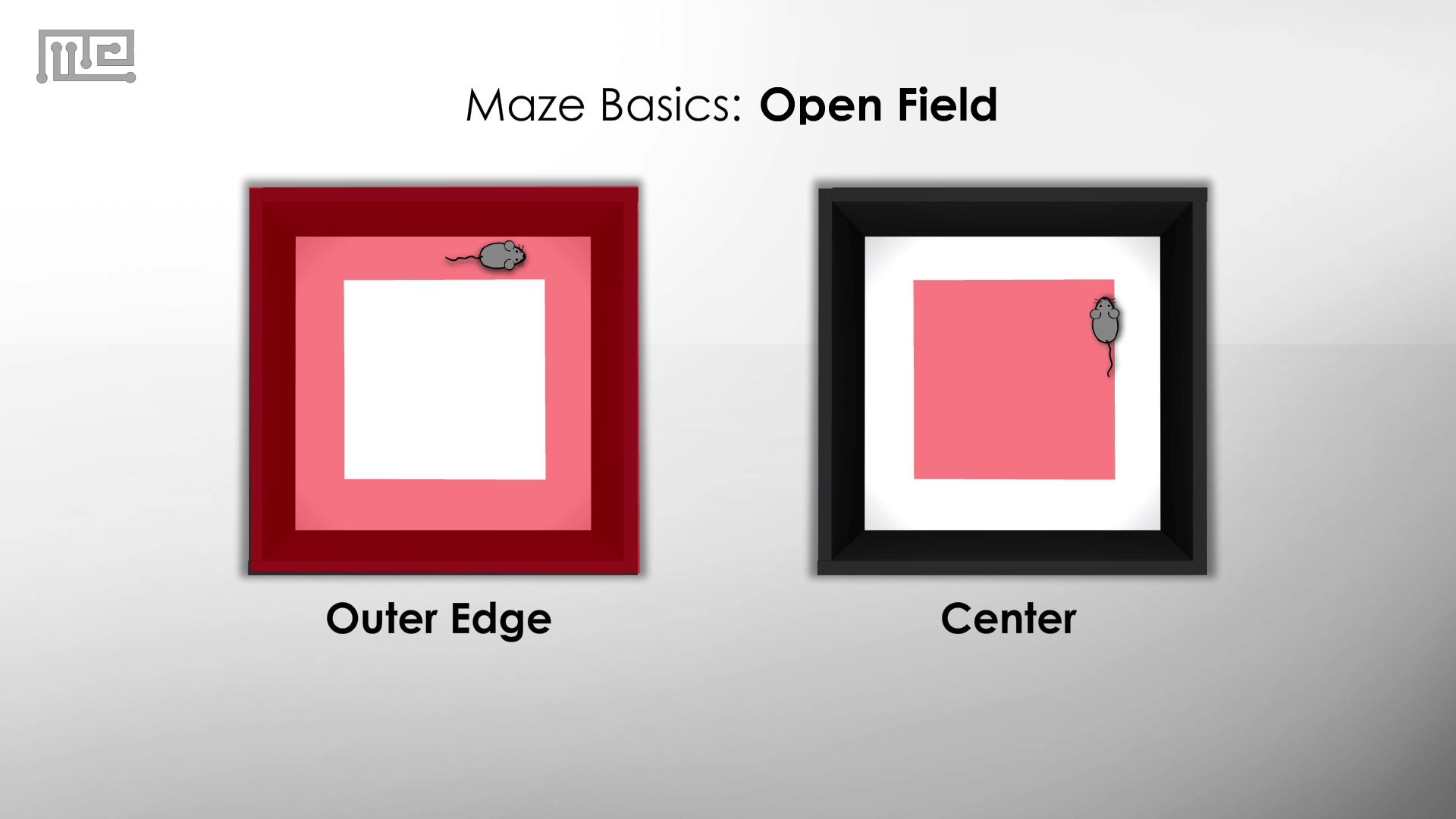Hi everyone! Welcome back to another installment of Maze Basics. Today, we’re going to talk about the Open Field test. The apparatus for the open field test is probably exactly what you’d expect: an empty box. But, the apparatus can be modified in a variety of ways to fit what you want to study. The walls can be opaque or clear depending on whether you want to adapt the apparatus for a novel object recognition test or to study anxiety, respectively.
You might be thinking: What behavior could an empty box test? Well, the open field test is a pretty clever test. Rodents naturally have an aversion to open areas because open areas leave them exposed to predators. But they also want to explore new areas. This conflict allows us to measure their anxiety levels, as well as locomotor and exploration activity.
Video of Open Field Test: A Measure Of Anxiety
Here’s what a typical test would look like. Let’s say we place a control mouse in the open field test for 5 minutes. In those five minutes, we can look at the amount of time it spends walking around the outer edge of the box vs. the center of the box. The more anxious it is, the more time it will spend on the outer edge. We can also look at the total distance moved around the box, or the number of behaviors such as rearing, stretch attend postures, grooming, freezing, and urinating/defecating. All of these could be incorporated to measure the animal’s anxiety or exploratory level.
In a study by Choleris et. al., they looked at the effects of drugs on anxiety using the open field test. The researchers used diazepam and chlordiazepoxide, both of which are benzodiazepines, and thus, reduce anxiety. Both drugs caused a decrease in anxiety-like behaviors. For example, they reduced the number of stretch attends and wall-fallowing. Diazepam caused alterations in sitting and grooming behavior, whereas chlordiazepoxide led to a shift in the locomotor pattern. Though both drugs reduced anxiety, they led to a slight difference in behaviors, which can be important when considering which drugs to give to human patients suffering from anxiety.
Another study by Katz et. al. looked at the effect of stress on the open field activity in the rat. Rats that were exposed to chronic stress act as a model of depression, according to the researchers, because a prior history of stress can contribute to the development of depression. After being exposed to chronic stress, the rats showed lowered open field activity, which was then restored by chronic antidepressant treatment.
Often times, the open field test is paired with other anxiety measures such as the elevated plus maze, Barnes maze, and Zero maze. It can also be paired with the novel object recognition test, and serve as both a habituation time to the apparatus as well as a measure of anxiety before the second test. Overall, the open field is an extremely useful test and apparatus to have in your repertoire because it can be adapted to a variety of research interests.
Reference
- Choleris E, Thomas AW, Kavaliers M, Prato FS (2001). A detailed ethological analysis of the mouse open field test: effects of diazepam, chlordiazepoxide and an extremely low frequency pulsed magnetic field. Neuroscience & Biobehavioral Reviews 25(3): 235-260.
- Katz RJ, Roth KA, Carroll BJ (1981). Acute and Chronic Stress Effects on Open Field Activity in the Rat: Implications for a Model of Depression. Neuroscience & Biobehavioral Reviews. 5: 247-251.


